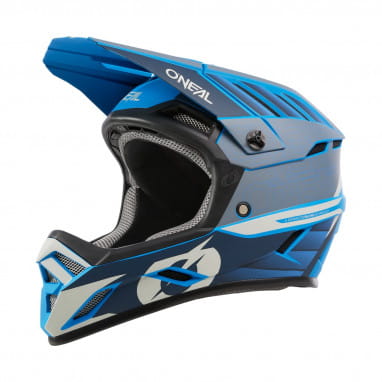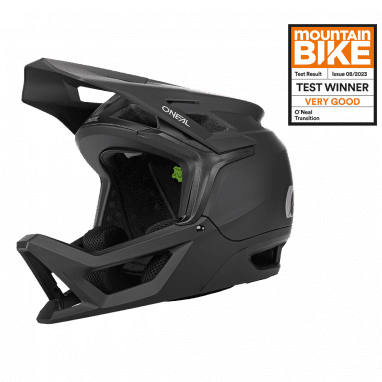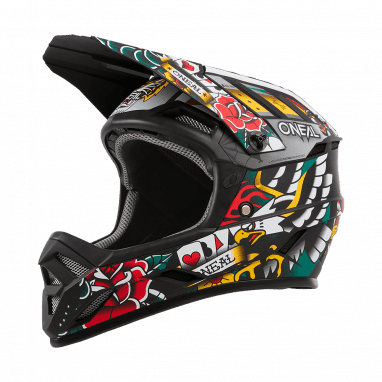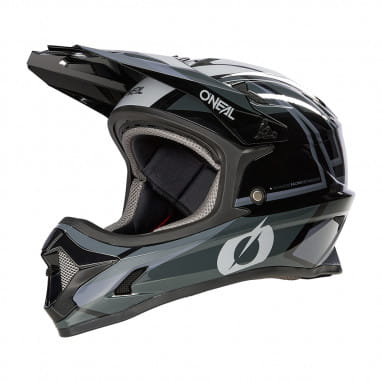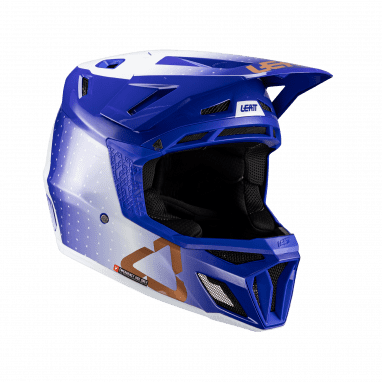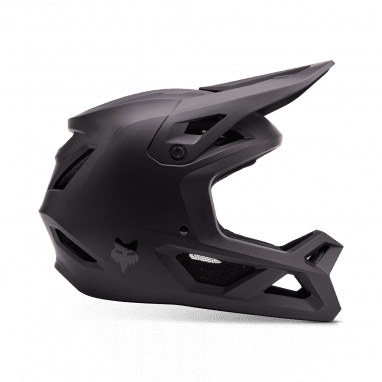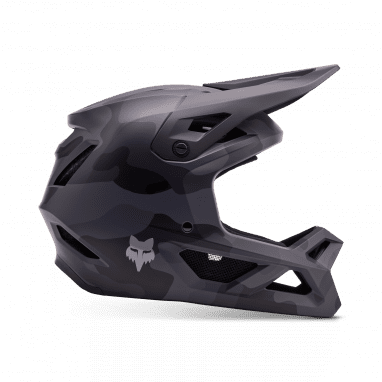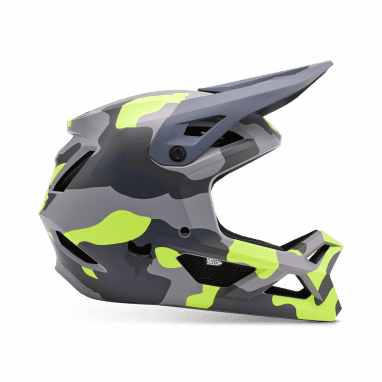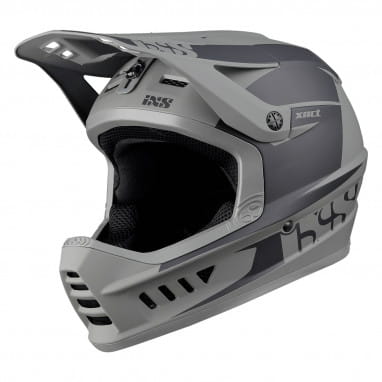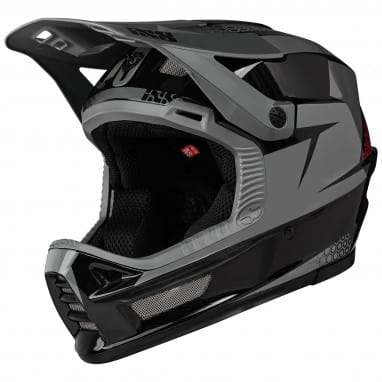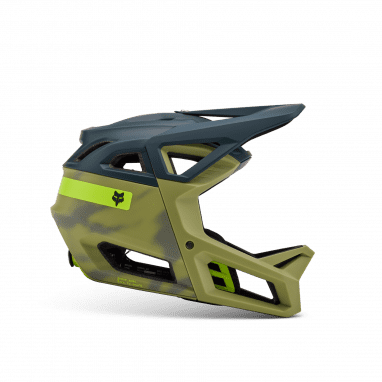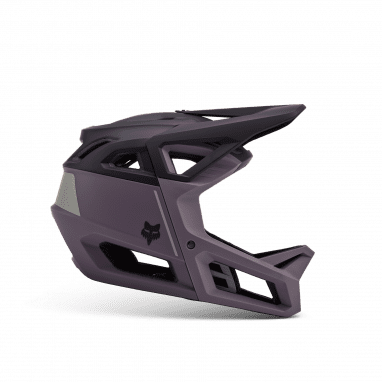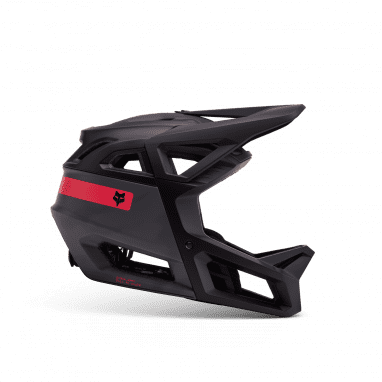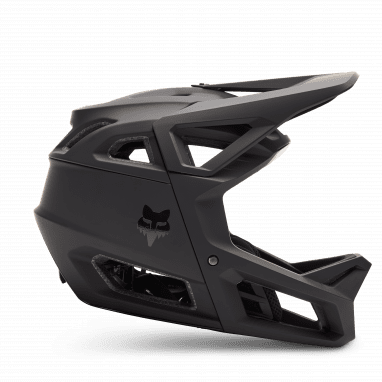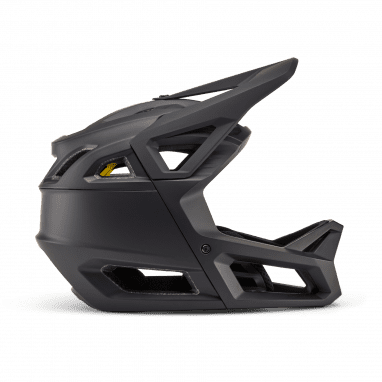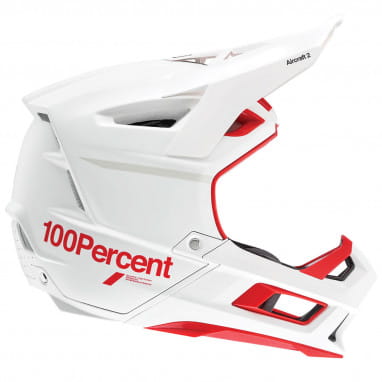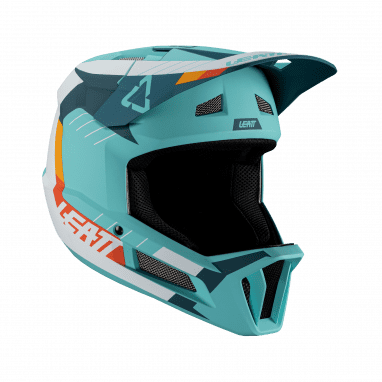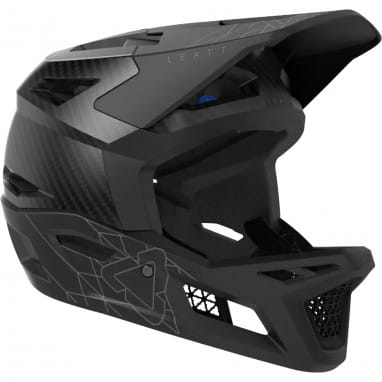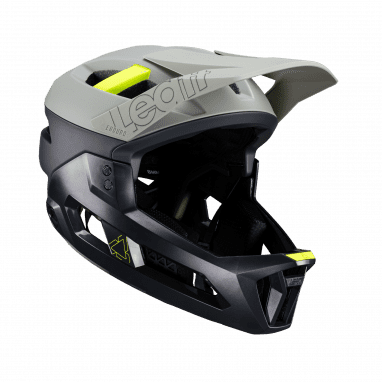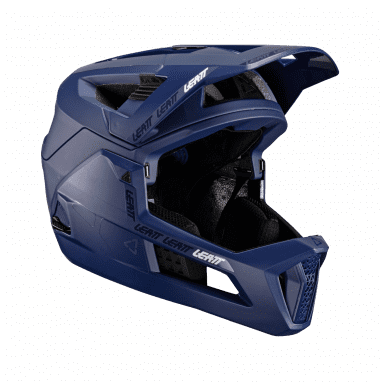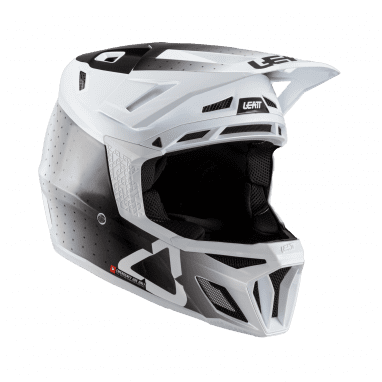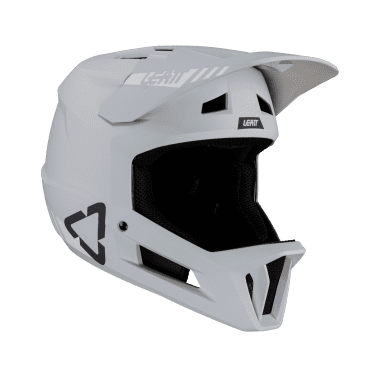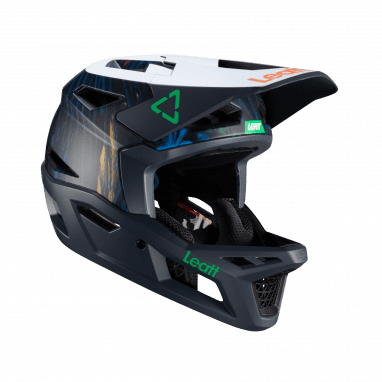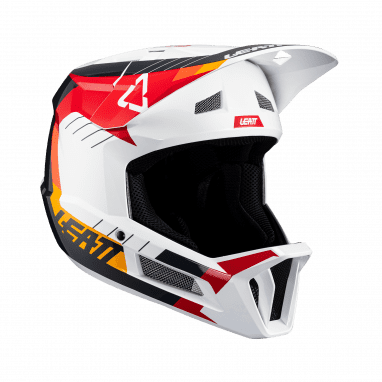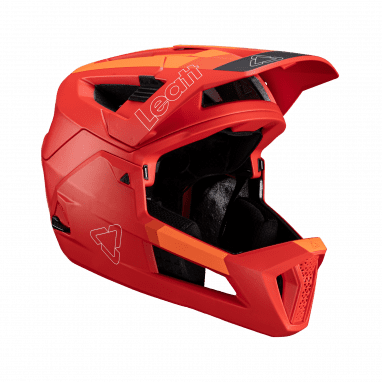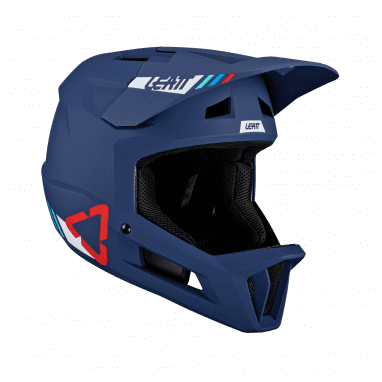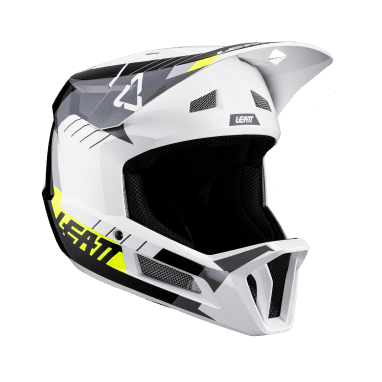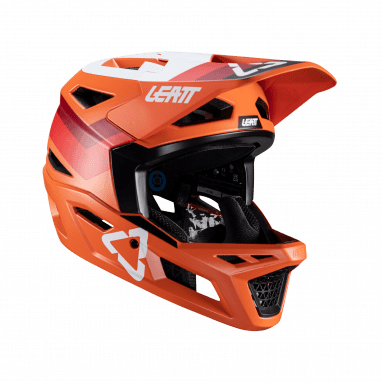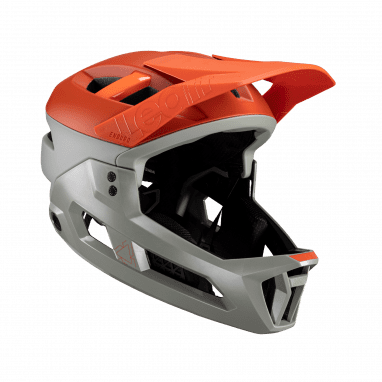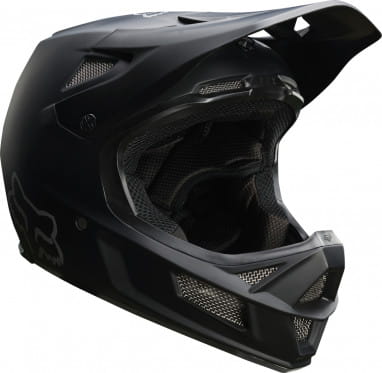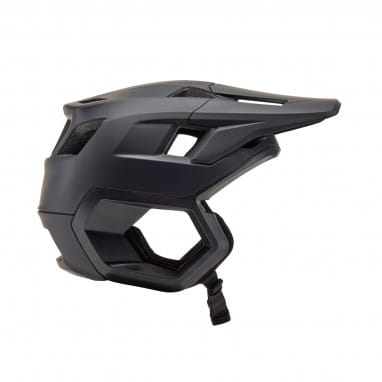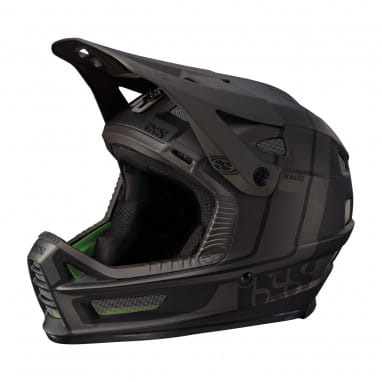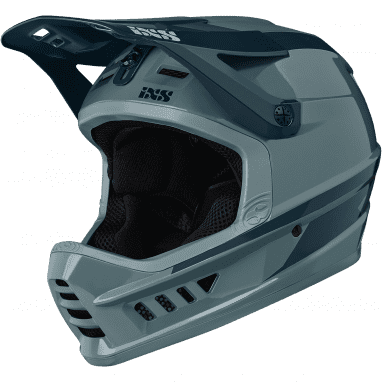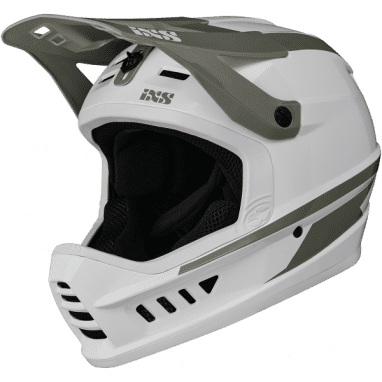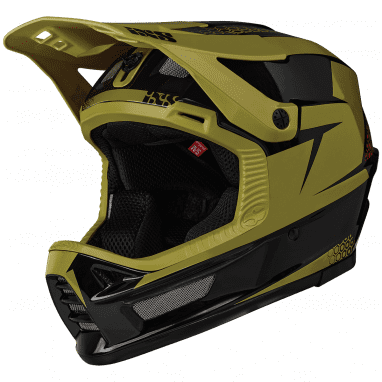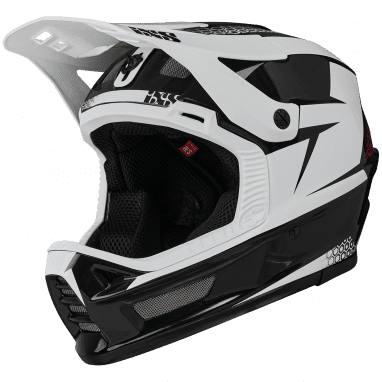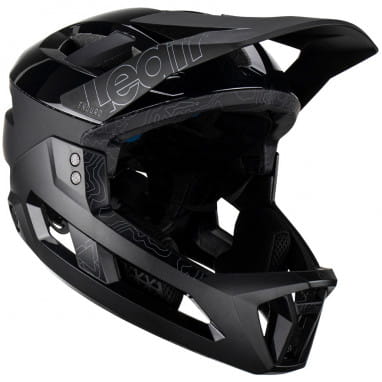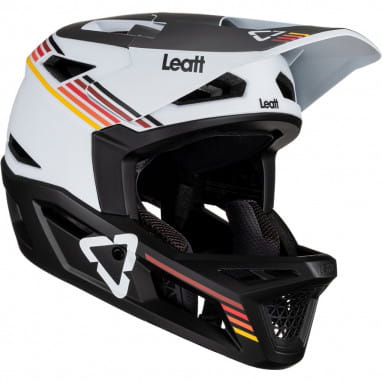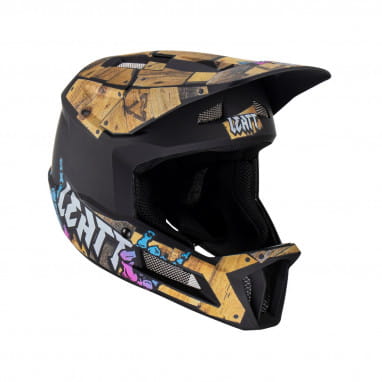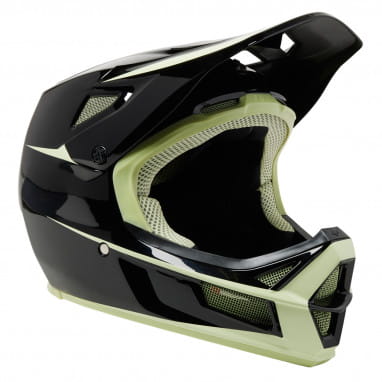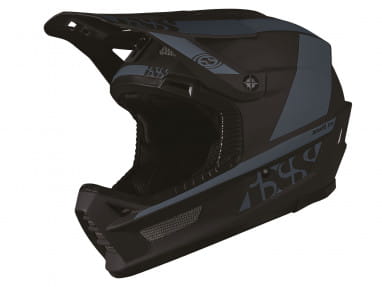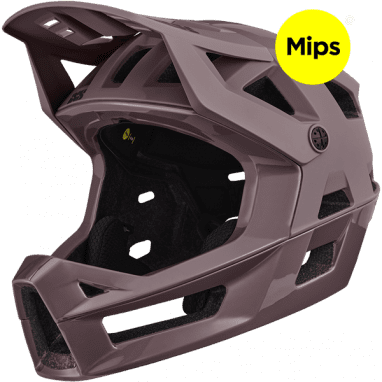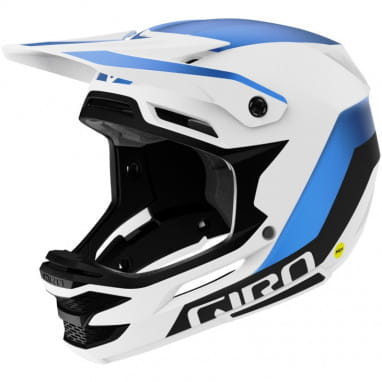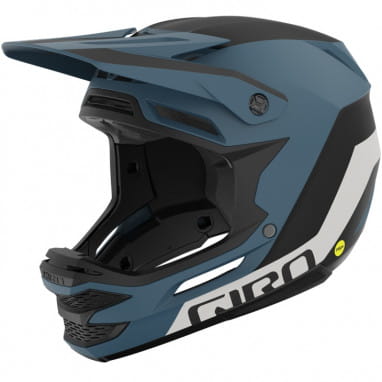No other MTB helmet keeps you safe like a full-face helmet can, because it protects your head, temples, neck and face. It helps your chin and jawbone keep enough distance to rocks, handlebar or gravel thanks to the chin bar. After all, you don't want everyone to easily guess what your favourite hobby is, because you're missing a few teeth, do you? Here you can find out how to order the perfect full-face helmet, which brands make cool helmets and why a full-face helmet is recommended for the MTB disciplines downhill, freeride or enduro.
Ok, time for head cinema: You're riding downhill on your downhill bike. The trail is narrow, but you have your bike under control. The mountain wind blows around your nose, the adrenalin pumps through your veins, that's what freedom feels like. Again and again, roots or stones make your fork bounce, you feel the movement in your arms, in your shoulders. But you and your bike, you form a perfect unit and sweep smoothly over it. In front of you is a bend, it doesn't look too tight, whoever brakes is afraid, you take the bend with speed! Gravel has accumulated in the bend, first the front wheel slips away, then the rear wheel breaks away and you fly ... fly ... and land on your face. From here on you can read on to the part where a, the helicopter comes and the fun is over because you weren't wearing a helmet; or b, you get up, shake yourself, tap your full-face helmet once gratefully, and get back on the bike. You get the point: The more action-packed your rides, the more you'll benefit from the appropriate safety technology. For bikers who ride downhill or enduro and all the freeriders among you, a full-face helmet is a must!
How to buy the right fullface helmet
It's really not difficult to order the right bike helmet. Put some thought into what you want your helmet to be able to do and measure your head circumference, and you're good to go.
The Construction
First, let's explain what you're getting for your money in the first place: When it comes to the construction of full-face bike helmets, well-known bike brands like FOX, Oneal, Giro or 100% have cribbed from motorcyclists, the helmets for bikes and motorcycles look really confusingly similar, too. However, full-face helmets for bikes are the more stripped-down versions, because even the toughest downhiller won't go quite as fast as a motorcycle. The technology that goes into the helmets is similar, though.
- On the outside, a smooth plastic shell provides the right look, this is where the designers can really let off steam.
- The inner shell is made of styrofoam, it absorbs an impact.
- Inside the helmet, thick pads cushion the helmet. Not only are they there to cushion an impact, many helmets come with pads of varying thicknesses so you can fit your new helmet perfectly to your head.
- The pads are made of a breathable fabric that absorbs sweat. Increasingly, the fibers are also odor-resistant. Mostly, the pads can also be washed in the washing machine, so your head stays nice and April fresh.
- The cheek pads can be easily removed from most full-face helmets. This allows first responders to more easily care for an injured helmet wearer or remove the helmet.
- Under the chin, the helmet is held in place by a chin strap . These straps have different closures, many helmets have double-D closures, ratchet closures, or magnetic closures that can be opened with one hand.
- Depending on the model, a full-face helmet has many or few ventilation openings, often these openings can also be opened or closed as required, so you can dose the air supply as you wish.
- A large visor not only protects your field of vision from the sun, but also keeps branches and foliage out of your eyes.
- On a hybrid full-face helmet the chin bar is removable. Here's how it works: put the chin bar in your backpack - pedal uphill; attach the chin bar to your helmet - pedal downhill.
- Most full-face helmets have a clip on the back for the elastic of a pair of goggles or a groove that serves as a guide for the elastic.
- The lightest full-face helmets bring from 600 grams on the scale. Modern materials such as carbon or Kevlar peel from with each new model year again and again a few grams of the weight of the helmets down. Cheaper and older models usually weigh a bit more.
- When buying, make sure that the helmet meets the CE standard EN 1078 then it is extensively tested and meets the safety standard of the EU. Also TÜV seal or the GS seal stand for tested products.
MIPS stands for Extra-Protection
More and more bike helmets have MIPS. MIPS stands for Multi-directional Impact Protection System, it means there's a layer between the two outer shells of your bike helmet that ensures the two layers can slide along each other. This way, in the event of an impact, rotational movements that can severely damage the brain are distributed and reduced.
Find your helmet size
To find the right helmet size, you'll need a tape measure or string and a ruler.
- Place the tape measure or string around your head about 1cm above your eyebrows.
- The tape measure should not slip down the back of your neck, it should encircle the widest part of the back of your head.
- Now you can read off the helmet size, or measure it with the ruler.
- In our shop you will find the selection menu head circumference for each helmet. So you can find your dream helmet in the right size.
- A full-face helmet should not wobble, but also not press.
- As with many bikes and more and more bike accessories, the trend is towards unisex. There are fewer and fewer bicycle helmets for women or men. However, there are different helmet sizes and narrower or wider fits.
When buying, make sure the helmet is compatible with your neckbrace, if you have one.
One more note: Often, helmets sustain invisible damage in a fall that affects their function. Therefore, if you've ever really banged on your helmet, you should replace it immediately!
Who needs a full-face helmet on a bike?
Wherever the adrenaline rush lurks, a full-face bike helmet should be at the start. DH, enduro and freeride are therefore the bike disciplines for which full-face helmets make absolute sense, because no other bike discipline has as much action. Generally, though, your need for protection doesn't depend on the bike you're on, but on your riding style. MTB rookies in particular are better off putting on one more layer of protection than one too few. That's why full-face helmets come in small sizes for kids.
From Leatt there are even full-face bike helmets for the different disciplines of downhill and enduro.
The unbeatable combo: full-face helmet and goggles
If you're out in nature a lot, you know the drill - all sorts of small stuff wants to get in your eyes. Mosquitoes, dust, branches, sun rays. But especially as a mountain biker, your bike demands your full concentration - logo, you need goggles. They look like ski goggles, but are optimized for year-round use. You can buy cycling goggles in all sorts of colors, so they match your helmet and bike outfit. They also come with tinted lenses or clear lenses. To ensure that the glasses fit properly and do not slip, most full-face helmets have a clamp at the back of the head, which holds the retaining rubber of the glasses. We didn't spell Google wrong, by the way, Goggle is English and means goggles.
How often should you buy a new full-face helmet?
If you don't fall on your head, a full-face helmet will last a few years, just like any other bicycle helmet does. As mentioned above, you should replace a bike helmet that has taken a hit as soon as possible, even if it looks intact
But even an accident-free helmet eventually gets on in years. At the latest when the chin straps fray, rubber parts become cracked or sticky or the colours on the surface fade, the rest of the material also increasingly loses its protective effect. Then it's time to look around the online shop for a new full-face helmet! Here at Bike-Mailorder you can get the perfect head protection for breathtaking MTB action. We have the best brands in the shop, find your new fullface helmet from your favorite brand here - easy ordered, fast delivered.
Please note that we cannot give any guarantee for standards, TÜV or the GS seal!



